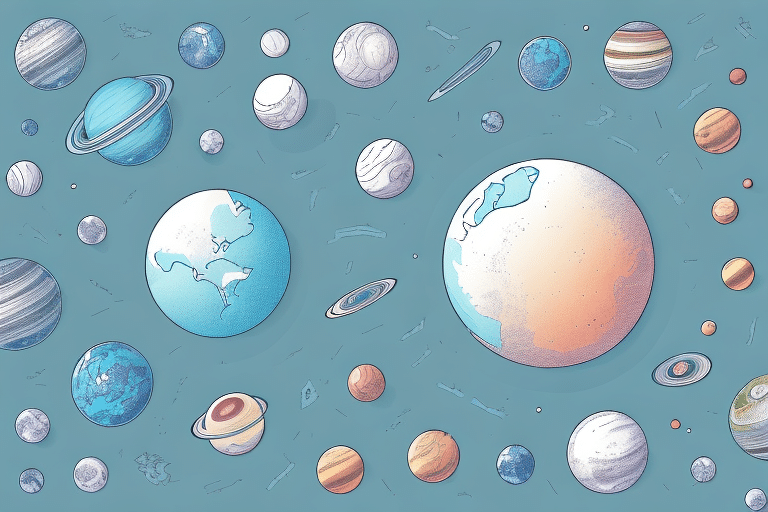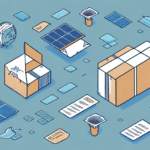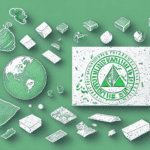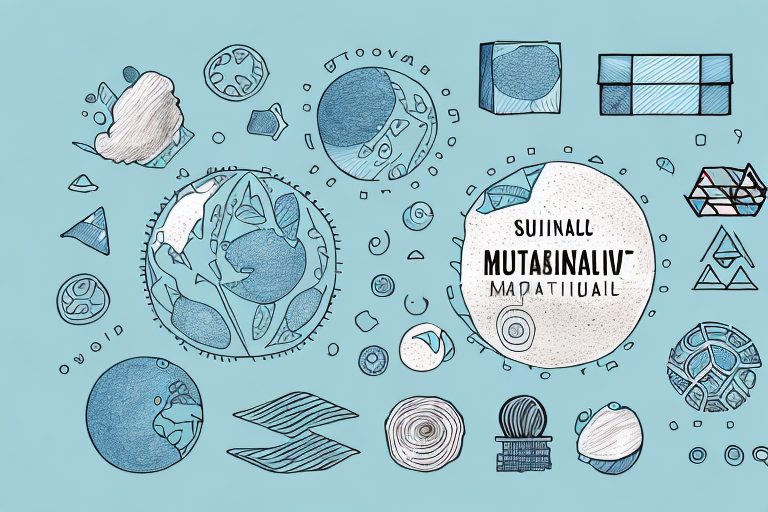The Benefits of Biodegradable Packaging for the Environment
In recent years, sustainability has become a critical focus across various industries, including packaging. Traditional materials like plastic and Styrofoam have been linked to significant environmental and wildlife harm. Biodegradable packaging presents a promising alternative, offering a solution that is far less detrimental to our planet. This article delves into the comprehensive benefits of biodegradable packaging and highlights successful implementations by leading companies.
Understanding Biodegradable Packaging: What It Is and How It Works
Biodegradable packaging comprises materials that naturally decompose into their basic components over time. Typically derived from renewable sources such as plant fibers, starches, or seaweed, these materials contrast sharply with traditional petroleum-based plastics, which persist in the environment for centuries.
The Biodegradation Process
Biodegradation occurs when microorganisms like bacteria and fungi break down the material into simpler compounds, which are then absorbed back into the soil. This process ensures that biodegradable packaging leaves no lasting environmental footprint, unlike conventional packaging.
Reduction in Landfill Waste
One significant advantage of biodegradable packaging is its ability to minimize landfill waste. While plastics can take over 400 years to decompose, biodegradable materials break down within months, reducing the accumulation of non-biodegradable waste and the emission of harmful chemicals during decomposition.
Use of Renewable Resources
Biodegradable packaging is often produced from renewable resources such as corn or sugarcane, which are more sustainable compared to the non-renewable petroleum resources used in traditional plastics. This transition supports environmental sustainability and reduces the ecological footprint of packaging production.
Environmental Impacts of Traditional Packaging
Traditional packaging materials, particularly plastics, have a profound negative impact on the environment. Key issues include:
- Ocean Pollution: Plastic waste is a major pollutant in marine environments, threatening marine life and ecosystems.
- Long Decomposition Times: Plastics can take hundreds of years to break down, leading to persistent environmental contamination.
- Energy Consumption: The production of traditional plastics is energy-intensive and contributes significantly to greenhouse gas emissions.
- Resource Depletion: Packaging materials like paper and cardboard require deforestation, which results in habitat destruction and loss of biodiversity.
Transitioning to biodegradable alternatives can mitigate these impacts, promoting a healthier environment and conserving natural resources.
The Rise of Biodegradable Packaging: Current Trends and Future Predictions
The demand for environmentally sustainable products is driving the adoption of biodegradable packaging. Key trends include:
Consumer Awareness and Demand
Studies indicate that consumers are increasingly willing to pay a premium for sustainably packaged products. According to a survey by Accenture, 60% of participants are willing to spend more on products with sustainable packaging.
Innovative Materials
Companies are investing in the development of novel biodegradable materials, such as plant-based plastics, mushroom-based packaging, and seaweed-derived packaging. These innovations aim to enhance sustainability while maintaining functional packaging standards.
Corporate Sustainability Initiatives
With a growing emphasis on corporate social responsibility, businesses are committed to reducing their environmental impact by adopting biodegradable packaging solutions. This trend is expected to intensify as regulatory pressures and consumer expectations evolve.
Types of Biodegradable Materials Used in Packaging
Biodegradable packaging materials encompass a variety of options, each with unique properties and applications:
Bioplastics
Made from plant-based sources like cornstarch, bioplastics are a popular choice for packaging due to their versatility and environmental benefits.
Paper and Cardboard
Paper is a renewable resource that is easily recyclable and compostable, making it suitable for products like cardboard boxes and paper bags.
Mushroom-Based Packaging
Produced from mycelium, the root structure of mushrooms, this packaging is fully compostable and can be grown without extensive land or water use.
Seaweed Packaging
Edible and biodegradable, seaweed-based packaging offers an innovative solution for reducing plastic waste while maintaining food safety standards.
The Science of Biodegradation: How Natural Processes Break Down Biodegradable Packaging
Biodegradation of packaging materials involves the breakdown of polymers into simpler compounds through the action of microorganisms. Factors influencing this process include:
- Material Composition: Certain materials decompose faster due to their molecular structure.
- Environmental Conditions: Temperature, moisture, and the presence of microorganisms significantly affect the rate of biodegradation.
Effective biodegradation requires appropriate disposal methods, such as industrial composting facilities, to ensure that materials break down efficiently without releasing harmful byproducts.
Comparing Biodegradable and Compostable Packaging: Which Is Better for the Environment?
While often used interchangeably, biodegradable and compostable packaging have distinct differences:
- Biodegradable: Refers to materials that can be broken down by microorganisms over time, but may not necessarily add nutrients to the soil.
- Compostable: Not only biodegradable but also enriches the soil by providing organic matter once decomposed.
Both types are superior to traditional packaging, but compostable materials offer additional environmental benefits by enhancing soil quality. It's essential to choose certified materials to ensure they meet specific environmental standards.
Economic and Business Benefits of Switching to Biodegradable Packaging
Adopting biodegradable packaging can yield significant economic advantages for businesses:
- Cost Efficiency: In some cases, producing biodegradable materials can be more cost-effective than traditional plastics.
- Enhanced Brand Image: Demonstrating a commitment to sustainability can attract eco-conscious consumers and foster brand loyalty.
- Regulatory Compliance: Meeting environmental regulations helps avoid fines and positions companies as leaders in sustainability.
Investing in biodegradable packaging aligns business operations with sustainability goals, driving long-term profitability and market competitiveness.
Consumer Perspectives on Biodegradable Packaging: Willingness to Pay More for Sustainable Options
Consumer preferences are shifting towards sustainability, with many willing to invest in eco-friendly packaging:
Survey Insights
A study by Accenture revealed that 60% of respondents are prepared to pay a premium for products with sustainable packaging, indicating a strong market trend towards eco-conscious consumption.
Advantages for Consumers
- Environmental Responsibility: Consumers can contribute to reducing waste and pollution by choosing biodegradable packaging.
- Health Benefits: Biodegradable materials often contain fewer harmful chemicals compared to traditional plastics.
However, challenges such as higher production costs and limited recycling infrastructure must be addressed to increase the adoption of biodegradable packaging.
Government Regulations and Policies on Biodegradable Packaging
Governments play a pivotal role in promoting the use of biodegradable packaging through various regulations and incentives:
- Legislation: Laws mandating the use of biodegradable or compostable materials in specific industries help reduce environmental impact.
- Incentives: Tax breaks and subsidies for companies adopting sustainable packaging solutions encourage businesses to make environmentally friendly choices.
These policies not only support environmental goals but also drive innovation in sustainable packaging technologies.
Challenges and Limitations of Biodegradable Packaging: Addressing Common Myths and Misconceptions
Despite its benefits, biodegradable packaging faces several challenges:
- Decomposition Conditions: Some materials require specific conditions to biodegrade effectively, which may not always be available.
- Potential Microplastics: Certain biodegradable materials can break down into microplastics, posing environmental risks.
Addressing these issues involves ensuring proper disposal methods and continuous research to improve the biodegradability and safety of packaging materials.
Examples of Successful Implementation of Biodegradable Packaging by Companies
Leading companies are pioneering the use of biodegradable packaging, setting benchmarks for sustainability:
- McDonald's: Committed to using 100% sustainable packaging by 2025, McDonald's has already transitioned to paper and biodegradable alternatives for items like straws.
- Patagonia: This outdoor clothing retailer utilizes biodegradable materials in its packaging and has implemented waste reduction strategies across its supply chain.
These initiatives demonstrate how large corporations can effectively integrate biodegradable packaging, inspiring others to follow suit.
The Role of Education and Awareness in Promoting Sustainable Practices in the Use of Biodegradable Packaging
Educating consumers and stakeholders is essential for the widespread adoption of biodegradable packaging:
- Consumer Education: Informing the public about the benefits and proper disposal of biodegradable packaging encourages responsible usage.
- Corporate Training: Companies can train employees on sustainable practices and the importance of using eco-friendly materials.
- Community Initiatives: Schools and organizations can promote recycling and waste reduction programs to support sustainability goals.
Raising awareness fosters a culture of sustainability, driving collective action towards environmental preservation.
Conclusion: Why Switching to Biodegradable Packaging is a Step Towards a Greener Future
Adopting biodegradable packaging offers numerous benefits, from reducing waste and pollution to conserving natural resources. These materials provide a sustainable alternative to traditional packaging, aligning with both environmental goals and consumer preferences. As businesses and consumers increasingly prioritize eco-friendly solutions, the transition to biodegradable packaging represents a significant stride towards a more sustainable and environmentally responsible future.




















